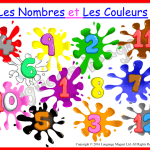Vocabulary is a critical component of English Language Arts education, as it influences reading comprehension, writing skills, and communication. Teaching vocabulary effectively requires strategic and engaging approaches to ensure that students retain and apply new words in various contexts. In this article, we will discuss five strategies for teaching vocabulary in English Language Arts.
Explicit Instruction: Introduce Words in Context
Explicitly teaching vocabulary involves introducing new words within the context of a text or lesson. This approach allows students to better understand the meaning and usage of the words they encounter.
- Use rich texts: Select texts with rich and varied vocabulary that challenge students and provide opportunities for learning new words. Newsela is a great resource for finding grade-appropriate articles with diverse vocabulary.
- Define words in context: When introducing new words, discuss their meanings and usage within the text. Encourage students to use context clues to decipher the meanings of unfamiliar words.
Word Walls: Create a Visual Vocabulary Display
Word walls are visual displays of important vocabulary words that students encounter during lessons or independent reading.
- Display words: Arrange the words alphabetically or by theme on a bulletin board or whiteboard. Make sure the words are large and legible.
- Add visual cues: Include images, synonyms, or examples to provide additional context for each word.
- Encourage interaction: Invite students to add words to the wall, discuss the meanings of words during class discussions, and refer to the wall when writing or speaking. Scholastic offers great tips on creating interactive word walls.
Word Games: Make Learning Vocabulary Fun
Word games are engaging ways to help students learn and practice new vocabulary while having fun.
- Play games: Introduce games like Scrabble, Boggle, or Bananagrams to encourage students to practice spelling, word formation, and vocabulary.
- Create custom games: Adapt classic games like bingo, charades, or Pictionary to focus on specific vocabulary words from your lessons. Check out Education.com for game ideas tailored to various age groups and vocabulary levels.
Word Journals: Encourage Independent Vocabulary Exploration
Word journals are personal vocabulary logs that students use to record, explore, and practice new words they encounter.
- Set up a journal: Provide each student with a notebook or create a digital journal using a platform like Google Docs.
- Encourage exploration: Instruct students to record new words they come across during independent reading or class activities, along with their definitions, synonyms, and example sentences.
- Reflect on learning: Schedule regular check-ins for students to share new words from their journals and discuss how they’ve applied them in their writing or speaking.
Semantic Mapping: Organize Vocabulary by Relationships
Semantic mapping is a visual technique that helps students explore the relationships between words and their meanings.
- Create maps: Use graphic organizers like word webs, concept maps, or Venn diagrams to visually represent the connections between vocabulary words.
- Connect words: Encourage students to group words by synonyms, antonyms, categories, or word families. This process helps students understand the nuances and relationships between words.
- Integrate mapping: Incorporate semantic mapping into reading, writing, and speaking activities to reinforce vocabulary learning.
Conclusion
Teaching vocabulary in English Language Arts requires diverse and engaging strategies to ensure that students develop a strong vocabulary foundation. By incorporating explicit instruction, word walls, word games, word journals, and semantic mapping into your teaching approach, you can create an effective and enjoyable vocabulary learning environment for your students. With these strategies in place, students will not only acquire new vocabulary but also gain the confidence and skills to apply these words in various contexts, ultimately enhancing their overall language proficiency.


